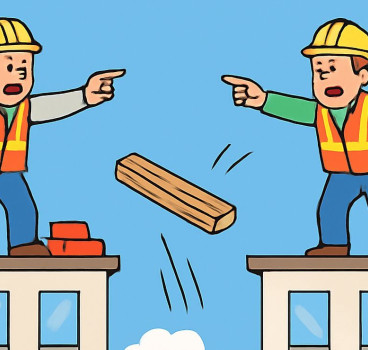Why the concrete delivery hose market continues to boom
Often overlooked as a market in its own right, the concrete delivery hose sector is a critical component that underpins the efficient and successful completion of countless projects. While the industry's spotlight frequently looks at the bigger market for concrete, it is the seamless transfer of this material from mixer to building site that continues to play a vital role within the construction industry, writes John Ridgeway.
Despite its unassuming role, the concrete delivery hose market has experienced substantial growth in recent years. This growth is a direct reflection of the broader construction industry's expansion, driven by factors such as urbanisation, infrastructure development and industrial growth. As these sectors thrive, so too does the demand for reliable and efficient concrete delivery solutions.
Recent market data, from The Business Research Company, underscores the significance of concrete delivery hoses. According to the BRC, the global market has witnessed substantial growth, expanding from $0.71 billion in 2023 to a projected $0.75 billion in 2024, reflecting a compound annual growth rate (CAGR) of 6.4%. This upward trajectory is anticipated to continue, with the market poised to reach $0.97 billion by 2028, maintaining a CAGR of 6.7%.
As already mentioned, several key factors are driving this robust growth. As cities expand and populations concentrate, the demand for new construction projects, from residential buildings to commercial complexes and infrastructure, continues to boom. Concrete, the primary building material, is indispensable in this process and its efficient delivery is paramount.
The industrial sector is also experiencing significant growth, fuelled by factors such as manufacturing expansion and logistics optimisation. The construction of factories, warehouses and industrial parks necessitates large volumes of concrete, thereby boosting the demand for delivery hoses.
Moreover, governments worldwide are prioritising infrastructure development. The construction of roads, bridges and public transportation systems requires substantial amounts of concrete, creating a steady demand for efficient delivery solutions.
Another factor is the increasing complexity of construction projects, which is driving the need for specialised concrete delivery equipment. Modern buildings often feature intricate designs and require precise concrete placement, emphasising the importance of reliable and adaptable hoses.
In short, it is the sheer volume of construction projects and the nature of modern construction, that has also influenced the market. The increasing complexity of building designs and the demand for precision in concrete placement have placed higher expectations on concrete delivery equipment. Consequently, the development of hoses that can withstand higher pressures, handle diverse concrete mixes and reach challenging areas has become paramount.
Sustainability has also emerged as a key driver in the construction industry and the concrete delivery hose market is no exception. The development of low-carbon cement and other eco-friendly materials necessitates hoses that can handle these new formulations without compromising performance. Additionally, manufacturers are exploring ways to reduce the environmental impact of hose production and disposal.
Growth and innovation
This means that the concrete delivery hose market is not simply experiencing growth - it is also witnessing significant innovation. New trends are emerging, driven by this focus on sustainability and environmental impact, as well as advancements in concrete pumping technology.
Because sustainability is a major concern in the construction industry, the development of low-carbon cement from innovative systems like sublime systems offers a promising avenue for a more environmentally friendly approach to concrete use. Concrete delivery hoses that can efficiently handle these sustainable materials will be increasingly sought after.
With the growing emphasis on precision in building projects, advancements in concrete pumping technology are also paving the way for improved efficiency and accuracy. The hoses used in conjunction with these advanced pumping systems need to be robust, flexible and adaptable to meet the specific requirements of each project.
One of the most crucial roles of concrete delivery hoses is ensuring the efficient and controlled pouring of concrete in hard-to-reach areas. This not only accelerates construction timelines but also enhances the overall safety of the project. By providing a reliable flow of concrete, these hoses contribute to improved efficiency. Precise concrete placement minimises the need for manual adjustments and rework, leading to faster completion of projects.
Furthermore, by keeping workers at a safe distance from the pouring point, concrete delivery hoses significantly reduce the risk of accidents and injuries on construction sites. Controlled concrete flow also helps prevent over-mixing or segregation, ensuring the quality and integrity of the final structure.
As already mentioned, the concrete delivery hose market represents a distinct niche within the broader construction industry. While it may seem like a singular component, it plays a pivotal role in the efficient and effective execution of concrete construction projects.
Unlike other construction equipment or materials, the concrete delivery hose is specifically designed to withstand the unique challenges posed by transporting concrete. It must be durable, flexible and capable of handling the abrasive nature of concrete and the high pressures involved in pumping. This specialisation requires specific materials, manufacturing processes and quality control measures.
Furthermore, the performance of a concrete delivery hose directly impacts the quality of the final concrete product. Blockages, leaks or hose failures can result in delays, rework and compromised concrete integrity. As such, the market demands high-quality hoses that can withstand the rigours of construction sites and ensure the smooth flow of concrete.
Challenges ahead
That said, the concrete delivery hose market, while experiencing growth, is not without its challenges. Manufacturers and suppliers face a complex landscape characterised by several hurdles. Concrete is an abrasive substance, demanding hoses that can withstand severe wear and tear. Developing materials that balance durability with flexibility is a constant challenge.
Concrete pumping systems also operate at high pressures, requiring hoses that can safely handle these forces without compromising integrity. They must also be able to withstand a wide range of temperatures, from freezing conditions to the heat generated by concrete curing. Furthermore, the manufacturing process requires precision to ensure consistent hose diameter, wall thickness and reinforcement, impacting the hose's performance and lifespan.
All this means that the concrete delivery hose market is poised for significant evolution, driven by technological advancements, sustainability concerns and changing construction practices.
We are now seeing the use of advanced polymers in hose construction, which can enhance durability, flexibility and resistance to abrasion, leading to longer product lifespans. Reducing the weight of hoses is helping to improve handling and transportation efficiency, benefiting construction crews.
Embedding sensors into hoses is providing real-time data on pressure, temperature and wear, enabling predictive maintenance and optimising performance. Automated hose handling systems are improving efficiency and safety on construction sites.
All this means that the future of the concrete delivery hose market is characterised by innovation, sustainability and specialisation and by embracing these trends, manufacturers can position themselves for long-term success in this dynamic industry.
Additional Blogs

Construction’s obsession with blame instead of learning
Construction is one of the most technically advanced industries in the built environment, yet culturally it often behaves like one of the least reflective. When things go wrong and they frequently...
Read moreHow risk Is routinely pushed down the supply chain
Risk is an unavoidable part of construction. Every project involves uncertainty around ground conditions, weather, design coordination, procurement, labour and programme. Yet while risk is inherent,...
Read more

What if Building Control went fully digital?
Building control governs structural integrity, fire protection, energy efficiency, accessibility and countless other aspects of design and construction. Historically, this process has been highly...
Read more